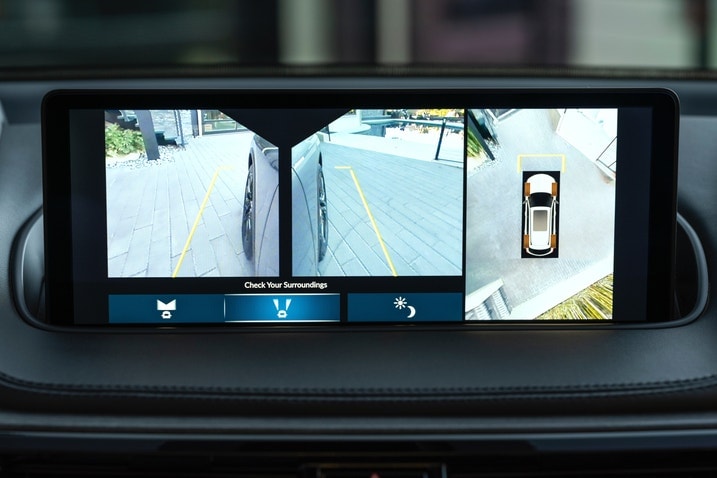What is a surround-view monitor?
A surround view monitor — also called a "surround-view camera (SVM)" — provides a real-time bird's-eye view of your car as if viewed from directly above, similar to a drone perspective. Typically, these cameras function at low speeds, allowing drivers to see how close the vehicle is to other cars or obstacles, such as curbs, poles and fire hydrants. Generally, the surround-view camera display appears side by side with the car's backup camera. Depending on the manufacturer, you may encounter 360-degree cameras referred to as top-down, bird's-eye view, or around-view cameras. In some off-road trucks and SUVs, surround-view cameras aid drivers in navigating around large rocks, trees and washouts.
Since 2018, auto manufacturers have been required to equip all new cars in the United States with backup cameras with video displays to help reduce accidents. As an evolution of backup cameras, several car companies offer surround-view cameras, also known as 360-degree cameras, which provide drivers with a complete view of their surroundings. These cameras help drivers park accurately and maneuver confidently in tight spaces. Here's how this advanced driver assistance feature works and why it is becoming increasingly popular in modern vehicles.
How does a surround-view camera work?
A surround-view monitor system doesn't rely on a single floating camera above the vehicle, as it might appear. Instead, it uses a combination of strategically placed cameras located around the vehicle to create a bird's-eye view. These cameras are typically hidden within the bumpers and sometimes positioned under the side mirrors.
When you shift into reverse or manually activate the system using a button on the dashboard or an icon in the infotainment system, the cameras turn on. The vehicle's software then combines the camera feeds into a single comprehensive view. A graphic usually represents the vehicle itself, and in some models, you can select an individual camera view. This feature can be particularly useful for observing curbs and parking space markings.
What cars have surround-view cameras?
Many automakers now include SVM cameras as standard equipment or as part of optional packages. For instance, Toyota provides this technology on most of its new cars, labeling it the Panoramic View Monitor. Luxury brands such as BMW often offer higher-resolution displays, and with BMW's Remote 3D View feature, drivers can view their vehicle's surroundings through a smartphone app. Here are some others and how they're marketed:
- Acura: Surround-View Camera
- Audi: Topview camera system
- Chevrolet: HD Surround Vision
- Ford: 360-Degree Camera
- Honda: Multi-Angle Rearview Camera
- Hyundai: Surround View Monitor
- Lexus: Panoramic View Monitor
- Mazda: 360° View Monitor
- Nissan: Intelligent Around View Monitor
- Volkswagen: Area View camera system
Are surround-view monitors (SVM) worth it?
Cars, trucks and SUVs are growing in size, and surround-view cameras can help make them feel more manageable, reducing drivers' concerns about hitting objects at low speeds. Nowadays, surround-view cameras are often standard equipment, so you typically won't have to pay extra for this technology, unlike some other advanced driver assist features. As for older cars, some have this technology. Surround-view cameras are also available as aftermarket kits that you can install yourself, but this process could be challenging.
